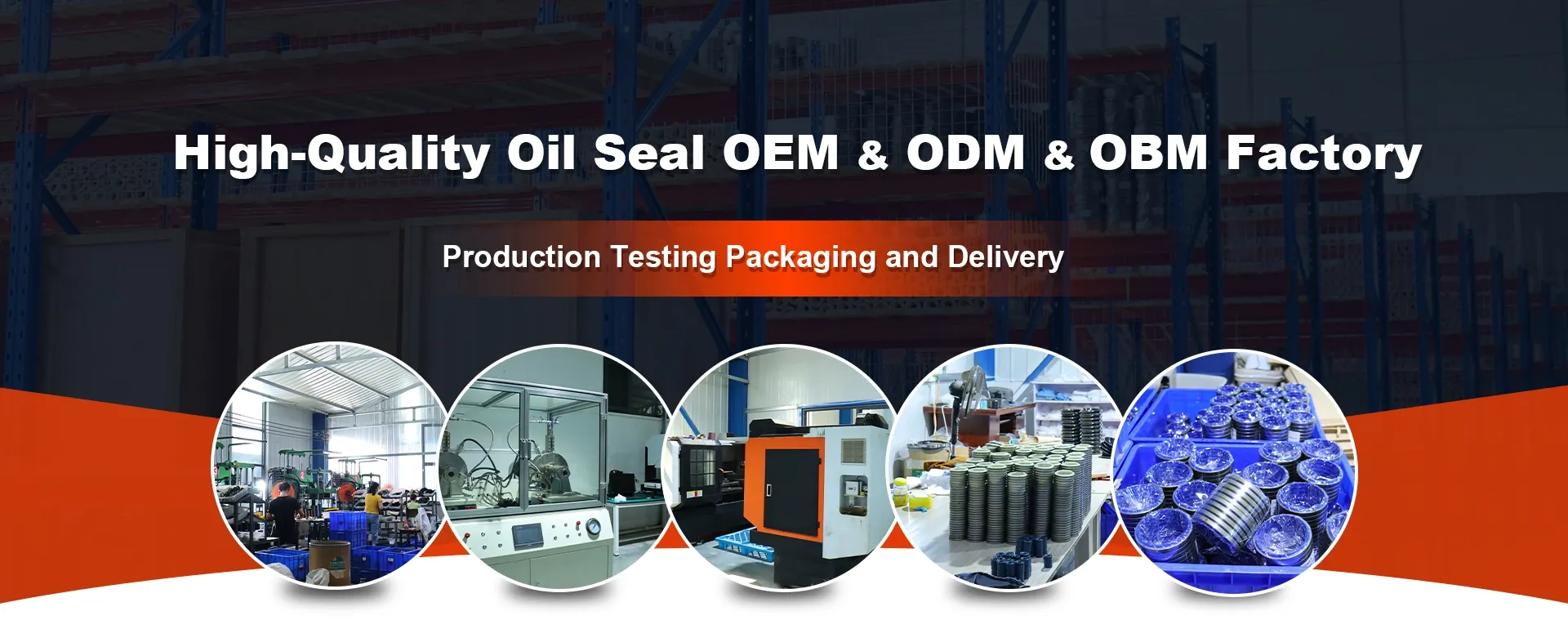دسمبر . 10, 2024 21:10 Back to list
Selecting the Right Hydraulic Oil Seal for Optimal Performance and Durability
Understanding Hydraulic Oil Seals Essential Components for Efficiency and Reliability
Hydraulic systems are integral to numerous industrial and mechanical applications, providing power and efficiency in operations ranging from machinery to automotive systems. One of the most critical components within these systems is the hydraulic oil seal. This article delves into the function, types, and importance of hydraulic oil seals in maintaining the integrity and performance of hydraulic systems.
What is a Hydraulic Oil Seal?
A hydraulic oil seal is a component designed to prevent the leakage of hydraulic fluids while allowing for the movement of hydraulic parts. These seals are typically made from materials that can withstand high pressures and resist wear, making them essential in ensuring the effective operation of hydraulic systems. Oil seals are placed between stationary and moving parts to create a barrier that keeps oil in and contaminants out.
Functions of Hydraulic Oil Seals
1. Leak Prevention The primary function of hydraulic oil seals is to prevent the loss of hydraulic fluid. Leakage can lead to reduced efficiency, potential system failure, and environmental hazards. By ensuring that oil remains contained within the system, oil seals play a vital role in maintaining operational integrity.
2. Contamination Protection Hydraulic systems are susceptible to contamination from dust, dirt, and other foreign particles. Oil seals act as a defense barrier, keeping these contaminants out of the hydraulic fluid and components. This protection helps to prolong the life of the hydraulic fluid and the overall system.
3. Pressure Maintenance Hydraulic systems operate under various pressure conditions. Oil seals are engineered to withstand these pressures without deforming or failing. Proper sealing ensures that the hydraulic system can operate efficiently, maintaining the necessary pressure for optimal performance.
Types of Hydraulic Oil Seals
There are various types of hydraulic oil seals, each designed for specific applications and operating conditions. Some common types include
hydraulic oil seal

1. Rotary Seals These seals are used in applications where there is rotation. They are often found in hydraulic pumps and motors, effectively sealing against the shaft while allowing it to rotate.
2. Rod Seals Typically used in hydraulic cylinders, rod seals prevent fluid from leaking out around the moving rod. They are crucial for ensuring that hydraulic cylinders function properly and maintain pressure.
3. Piston Seals Working in conjunction with rod seals, piston seals are designed to prevent fluid from leaking between the piston and the cylinder wall. They help maintain the pressure needed for the cylinder to function effectively.
4. V-Rings and U-Cups These are simple yet effective seal designs that provide a reliable sealing solution in many hydraulic applications. They are often used in conjunction with other types of seals to enhance the overall sealing capabilities.
Importance of Selecting the Right Hydraulic Oil Seal
Choosing the correct hydraulic oil seal is paramount for the longevity and efficiency of hydraulic systems. Factors to consider include the operating environment, fluid type, temperature ranges, and pressure levels. Seals made from materials such as nitrile, polyurethane, or fluorocarbon may be selected based on their suitability for specific conditions, including chemical compatibility and temperature resistance.
Using the wrong type of seal can lead to premature failure, increased maintenance costs, and unplanned downtime. Therefore, it is essential for engineers and maintenance professionals to prioritize the selection of high-quality hydraulic oil seals tailored to their specific applications.
Conclusion
Hydraulic oil seals are small yet mighty components vital for the efficient and safe operation of hydraulic systems. Their ability to prevent leaks, protect against contamination, and maintain pressure underscores their significance in various industries. By understanding the functions and types of hydraulic oil seals, operators can ensure better performance and longevity of their hydraulic systems, ultimately leading to increased productivity and reduced operational costs. In an age where efficiency is paramount, investing in high-quality hydraulic oil seals is not just a necessity—it is a commitment to reliability and excellence.
-
TCN Oil Seal Metal Ring Reinforcement for Heavy Machinery
NewsJul.25,2025
-
Rotary Lip Seal Spring-Loaded Design for High-Speed Applications
NewsJul.25,2025
-
Hydraulic Cylinder Seals Polyurethane Material for High-Impact Jobs
NewsJul.25,2025
-
High Pressure Oil Seal Polyurethane Coating Wear Resistance
NewsJul.25,2025
-
Dust Proof Seal Double Lip Design for Construction Equipment
NewsJul.25,2025
-
Hub Seal Polyurethane Wear Resistance in Agricultural Vehicles
NewsJul.25,2025
-
The Trans-formative Journey of Wheel Hub Oil Seals
NewsJun.06,2025
Products categories
















